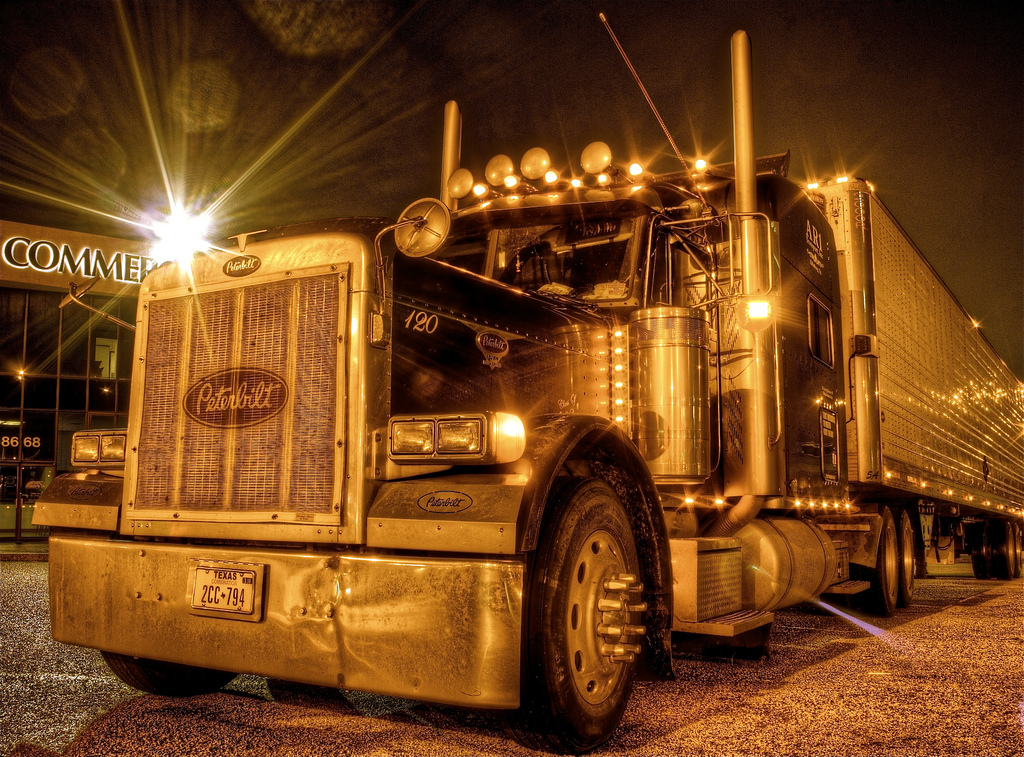
Advertisement
Chalk up thousands of job losses for middle America. The Fourth Industrial Revolution has begun its ascent into the trucking industry. Well, somebody has to be in the truck, I guess, to help unload until the robots come, or keep track of time, or sleep or maybe hold a second job. As a child of the ’60s, I, for one, am not happy at all about this Agenda 21/Agenda 2030 forced technology for self driving automobiles, let alone the newly designed eighteen-wheelers about to hit the road.
Personally, I’d rather not honk my horn at a driver who is veering off the road, then realize there’s a computer holding the steering wheel who doesn’t respond.
Big Story AP reports, ” . . . Anthony Levandowski, a robot-loving engineer who helped steer Google’s self-driving technology, is convinced autonomous big rigs will be the next big thing on the road to a safer transportation system.
“Levandowski left Google earlier this year to pursue his vision at Otto, a San Francisco startup the he co-founded with two other former Google employees, Lior Ron and Don Burnette, and another robotics expert, Claire Delaunay.
“Otto is aiming to equip trucks with software, sensors, lasers and cameras so they eventually will be able to navigate the more than 220,000 miles of U.S. highways on their own, while a human driver naps in the back of the cab or handles other tasks.
“For now, the robot truckers would only take control on the highways, leaving humans to handle the tougher task of wending through city streets. The idea is similar to the automated pilots that fly jets at high altitudes while leaving the takeoffs and landings to humans.

‘Our goal is to make trucks drive as humanly as possible, but with the reliability of machines,’ Levandowski says.”
Sorry, Mr. Levandowski, what are you saying? You want the trucks to drive “as humanly as possible?” What kind of techno-speak language is that? Have you already done your mild meld with metal while you were at Google? What about critical thinking skills, when your “reliable mechanics and robotics” go haywire with a huge load of heavy materials at 75 mph?
Thankfully, there is a bit of human push-back on this technology, at least for now.
Big Story AP reports, ” . . .Steven Shladover, program manager for mobility at the University of California’s Partners for Advanced Transportation Technology, maintains that the technology is still a long way from being reliable enough to convince government regulators that a robot can be entrusted to steer a truck traveling at highway speeds without causing a catastrophic accident.
“I don’t want to be on that highway when there is nobody there to take over a truck with 80,000 pounds of cargo and I don’t think I know anyone else who would want to be,” Shladover says. “The consequences of any kind of failure in any component would be too severe.”
This technology is sold like all government mandates. It will keep the roads safer. Right…
Big Story AP writes, “Levandowski insists . . . robot truckers are less likely to speed or continue to drive in unsafe conditions than a human, and will never get tired. Between 10 and 20 percent of the roughly 4,000 fatal accidents in the U.S. each year involving trucks and buses are linked to driver fatigue. . .”
Isn’t that why we use human rest stops? Will they become obsolete? After all, robots don’t have to pee.
Sources:
Submit a correction >>
This article may contain statements that reflect the opinion of the author
Advertisement
Advertisements















